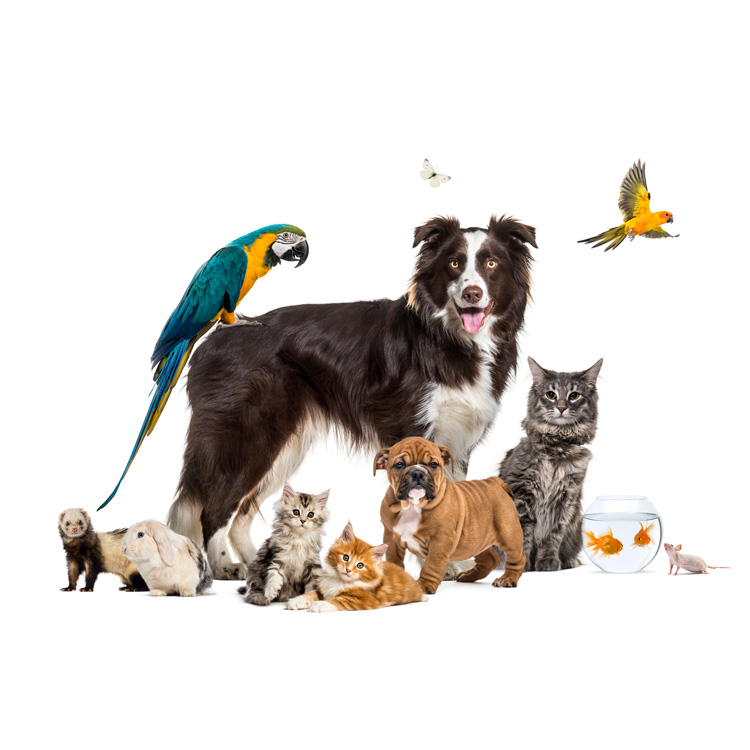
Opt for oral flea and tick control medication
Toxic pesticides in pet flea and tick control products could potentially expose your home and body to harmful toxicants. When spot-on treatments, flea collars, sprays, and foggers are used, the chemicals can spread through touch and the air, leaving residual coatings on surfaces, including human bodies. Exposure to these chemicals can adversely impact human health. Specifically, two chemicals of concern to avoid are fipronil and imidacloprid. Furthermore, when hands, clothes, and items covered with pesticides are washed, the chemicals can travel through the sewer systems and impact natural ecosystems.
Opting for oral flea tick and control products reduces these products' potential harm to humans, wildlife, and the environment. As oral medications are consumed by pets, the pesticides will not tactilely spread and will not eventually enter aquatic environments.
Other methods to manage flea, tick, and pest populations include:
- Vacuum, sweep, and mop your home regularly
- Frequently wash pet bedding with hot water
- Use metal flea combs
Avoid toxic pet cleaning products
Pets are particularly vulnerable and sensitive to toxic chemicals because of their smaller sizes, biology, and high exposure potential. Some chemicals in cleaning products are toxic to humans and pets and should be avoided.
Harmful chemicals, ingredients, and products to avoid include:
- Aerosols
- Air fresheners
- Ammonia
- Antibacterial/antimicrobials
- Chlorine bleach
- Disinfectants
- Formaldehyde
- Fragrance
- Glycol ethers (2-methoxyethanol, 2-ethoxyethanol, and 2-butoxyethanol)
Chemical ingredients are not always listed on pet cleaning products. Household cleaning products (products not targeted towards pet messes) tend to have more detailed ingredients lists than their pet counterparts, which makes it easier to discern if any harmful chemicals are present. Thus, cleaning your pet's area and messes with household cleaning products may help you avoid toxic chemicals.
Store cleaning products out of easy reach, and when cleaning an area of your home, ensure pets are not present.
For carpet, textile, urine, and vomit stains mix two tablespoon of hydrogen peroxide, one tablespoon of baking soda, and one tablespoon of plain, unscented soap. First, blot the stained area with a rag or paper towel to soak any moisture. Then apply a small amount of the mixture to the stain and let it sit for 10 minutes or so. Blot the area dry, and the stain and odor should be removed or minimized. Repeat the steps if necessary. Before applying the mixture, perform spot tests on the material to ensure it will not react poorly to the cleaner.
Choose safer cat litter
Cat litter and its chemical constituents can pose various health and environmental hazards, like causing illness and contaminating waste streams. You can mitigate the associated harm by avoiding certain products and characteristics.
Opt for safer cat litter products that are:
- Fragrance-free: Avoid scented and fragrance-containing cat litter. Chemicals called phthalates are often found in scented and perfumed products. Phthalates can cause reproductive harm to humans and cats and disrupt hormone functions.
- Dust-free: Cat litter can create dust in the home. Once stirred up, the dust in the air has the potential to travel to your lungs and cause harm.
- Non-clumping: Avoid clumping and clay cat litter, as these often contain the concerning chemical compound sodium bentonite. Studies have shown inhaling and ingesting sodium bentonite could affect lung function in humans and animals.
- Plan-based material: Cat litter made from plant-based materials like wood, paper, wheat, amongst others, are often repurposed and have a greater biodegradability potential than products that are clay and silica-based.
Choose safer pet beds
Your pet's beds may provide them with a cozy resting place, but they may also contain chemicals harmful to human health. Toxic chemicals and substances like per-and polyfluoroalkyl substances (PFAS), flame retardants, antimicrobials, and polyvinyl chloride (PVC) have all been found in pet beds. PFAS, found in water-repelling and stain-resistant products, have been linked to kidney and testicular cancer, as well as other ailments. Flame retardants are found in polyurethane foam (memory foam) and can decrease fertility and disrupt hormone functions. Odor-resistant products may contain antimicrobials which can adversely impact your respiratory and nervous systems. Beds made with PVC can contain toxic chemicals like hormone-disrupting phthalates. Also, the production of PVC involves and releases harmful chemicals. Given that pet beds are a potential source of exposure to toxic chemicals, you can mitigate this harm by avoiding certain products.
Pet bed properties and materials to avoid:
- Water-repelling and stain-resistant claims
- Polyurethane foam
- Odor-resistant
- PVC (polyvinyl chloride)
Choose beds with washable covers and that contain toxic-free materials like wool, cotton, and linen.
Opt for stainless steel and glass food and water bowls
Stainless steel and glass food and water bowls are preferable to plastic bowls, which can leach harmful chemicals like BPA into your pets' food and water.
Additional Resources
- Environmental Working Group: Polluted Pets, High Levels of Toxic Industrial Chemicals Contaminate Cats and Dogs
- National Pesticide Information Center: Pesticide Use Around Pets
- Six Classes: Green Policy Science Institute
- Made Safe: Pet Products
- The Humane Society of the United States: How to keep your pets safe around cleaning products
Share
Tweet this Tip >
Share on Facebook >
More Tips for Healthy Homes >